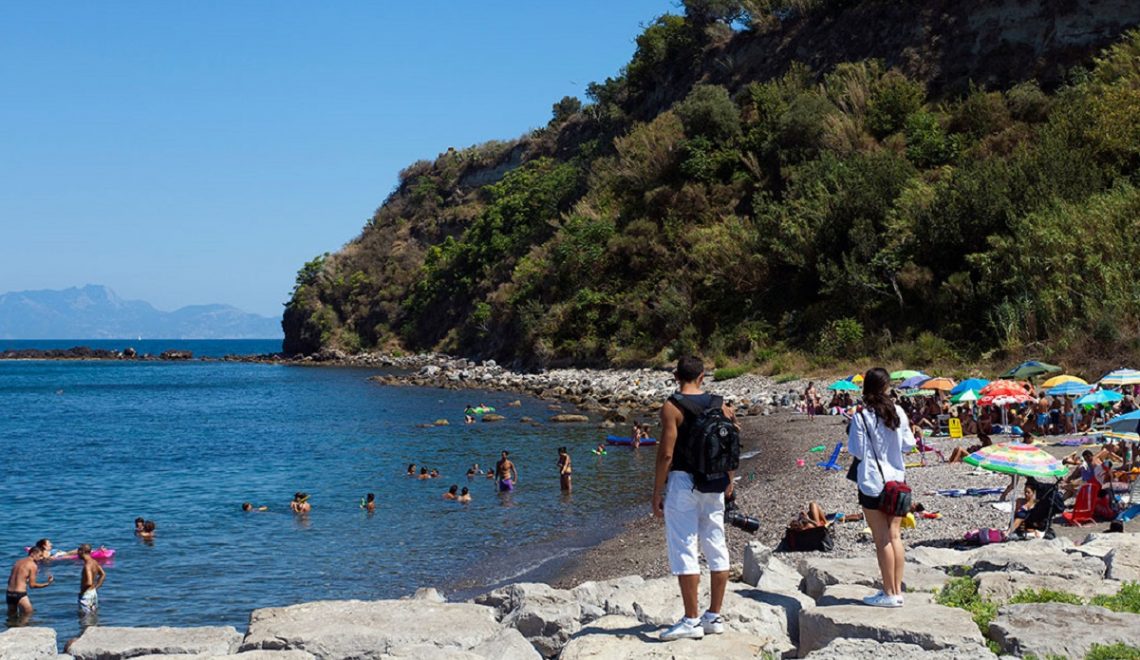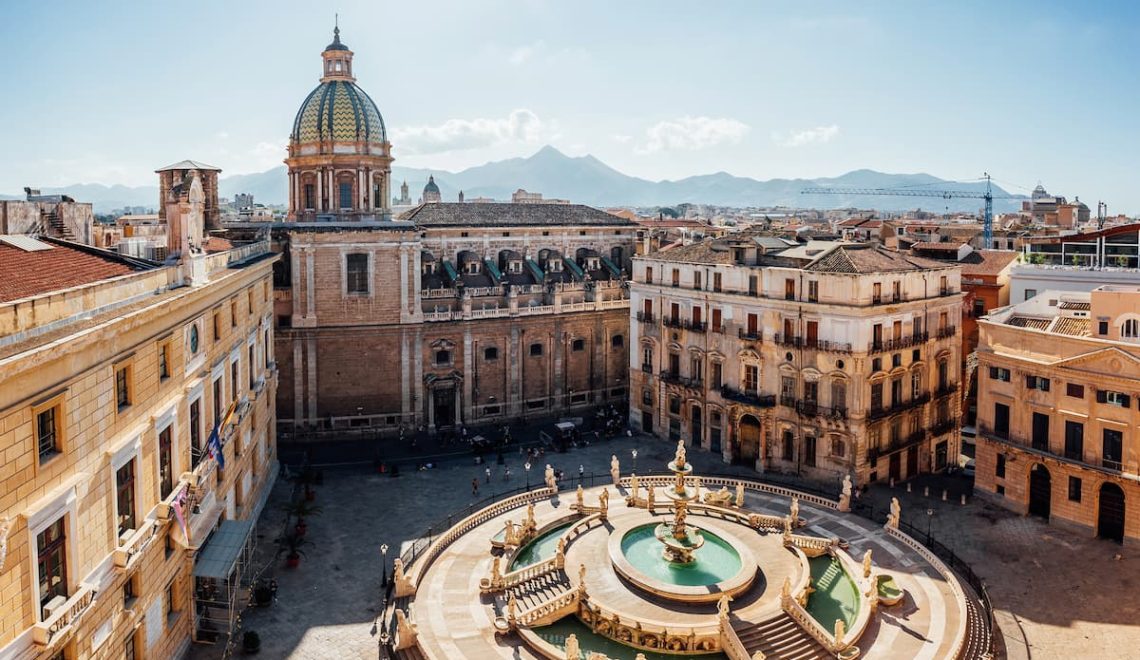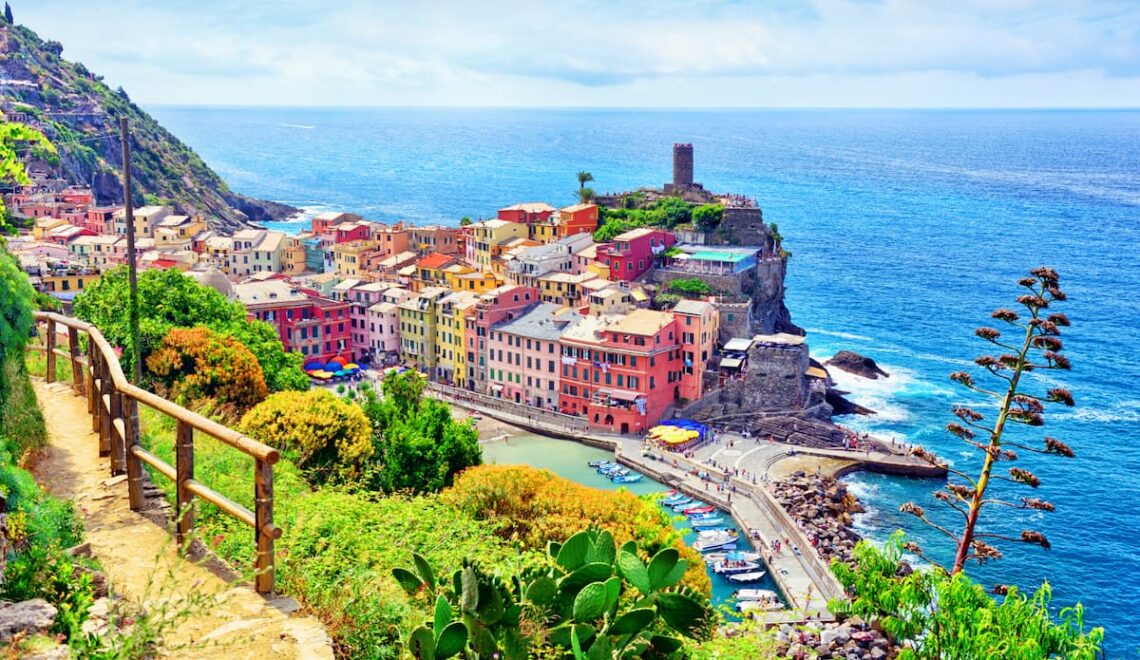
Discover ten things to see in the Aeolian Islands, the seven Sicilian islands with unforgettable beaches and volcanic craters that you can reach by train!
Seven diamonds in an emerald green sea: the Aeolian Islands are so precious that they have been a UNESCO Global Geopark and World Heritage Site since 2000. Stromboli and Volcano, are important volcanic sites and are visited by geologists and volcanologists from all over the world. The Aeolian Island archipelago consists of seven beautiful islands that have earned the nickname “Hawaii of the Mediterranean”; they comprise Alicudi, Filicudi, Lipari, Panarea, Salina, Stromboli, and Vulcano.
Myths and legends of the Aeolian Islands
The Aeolian Islands have an incredible history: inhabited since Neolithic times, they have been a strategic point for controlling the Mediterranean trade routes for centuries. Here gods such as Vulcan and Aeolus were the prominent figures of ancient myths.
Legend recounts that Aeolus, who had not become a god, arrived in the archipelago and was ordered by Zeus to guard the Mediterranean winds. Aeolus locked them inside wineskins in a cave on Lipari, where he remained until his death when he was rewarded with the gift of immortality for his diligent loyalty.
According to mythology, Hephaestus, god of fire and smith of the gods, stationed one of his forges on the very island of Vulcan, hence the Roman name.
The Aeolian Islands: what to see

Nature and history are interwoven on the Aeolian Islands, offering endless reasons for a sightseeing trip. Here are some ideas and what to see absolutely in each of the seven islands.
- Lipari – from the Marina Corta Castle you can admire the views of the sea and the nearby island of Vulcano. From there, you can reach the Pumice Stone Quarry, where mining was closed in 2005 but still bears witness to part of the island’s history. In the hamlet of Acquacalda, you will find beautiful beaches that, due precisely to the presence of pumice stone, look like those of the Caribbean. Also worth seeing are the San Calogero Baths, now closed but close to the archaeological excavations that testify to the presence of ancient thermal pools from Roman and Greek times, and the beaches of Papesca, Porticello, Praia di Vinci, and Valle Muria. Finally, the town of Lipari, its Castle with the Luigi Bernabò Brea Regional Archaeological Museum of the Aeolian Islands and the Acropolis are all worth visiting.
- Vulcano – is definitely the most tourist-oriented of the seven islands, with restaurants, discos and clubs also suitable for families with children. As soon as you disembark, you will immediately perceive the smell of sulfur due to the volcanic activity that also gives the island its characteristic biodiversity that warrants a visit to the Vulcano Oriented Nature Reserve. If you want to admire the spectacle of the warm waters, you can visit the Fumarole Beach; alternatively, you can enjoy the crystal clear waters of the Spiagge Nere or the Mulberry and Donkey Beaches. Hikers can visit the Valley of Monsters and the Great Crater of Vulcan, while those who prefer boating can go to the Siren’s Rock, the Pool of Venus and the Cave of the Horse.
- Salina – the island’s beaches to visit are: Santa Marina, Scario Beach, Pollara Beach, and Rinella Beach. A walk at sunset under the natural arch of Punta Perciato will leave you with the warmest of memories, along with Lingua, a small hamlet of ancient fishermen’s houses. Also in Salina you can visit extinct volcanic craters and follow the Brigantino path until you reach a magnificent vantage point.
- Panarea – hydrofoils dock at San Pietro, the island’s largest settlement where hotels, restaurants and clubs are located. Nearby, in Capo Milazzese you can visit the remains of a prehistoric village of the fourteenth century B.C. The best beaches to visit? Definitely Caletta degli Zimmari, Cala Junco and Calcara Beach. The beauty of the island’s natural landscape is a reminder that it is part of the Isola di Panarea e Scogli Viciniori Oriented Nature Reserve.
- Stromboli – the island’s volcano is still active, so it’s worth a visit to the Stromboli INGV Visitor Center, where you will discover everything about the volcanic nature of the archipelago. The most famous beach is Ficogrande Beach, although Lazzaro Beach, characterized by its crystal clear water, is also worth a visit.
- Alicudi – this is one of the less tourist-oriented islands, so it is perfect for those who love peace and nature. Here you can go hiking to admire the island’s biodiversity or take boat trips to discover beaches unreachable by land.
- Filicudi – our advice is to visit the Neolithic village of Capo Graziano and Mount Fossa delle Felci, with its extinct volcano. The beaches to see are those of Porto, Capo Graziano, Le Punti and Zucco Grande.
The Aeolian Islands: things to do

The Aeolian archipelago is a real paradise for scuba diving lovers. Snorkeling is one of the most recommended activities, but also hiking and trekking are great to fully admire and enjoy the beauty of nature on these islands.
Head for the Aeolian Islands with Italo
Today, you can also reach the Aeolian Islands by train. In fact, ItaloTreno has dedicated an innovative service to rail travel lovers with intermodal train + ferry solutions. Thanks to a partnership with the Alicost fast ferry company, you can get to Sapri by train, then reach the Aeolian Islands comfortably by hydrofoil. Alternatively, you can buy a train ticket to Messina that includes the Blujet ferry with boarding at Villa San Giovanni. For info and schedules on stops and latest destinations, visit the page dedicated to trains to Messina and Sapri.
Enjoy the carefree journey: reaching the Aeolian Islands has never been easier!




